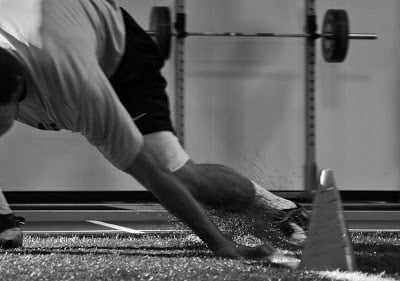
Stiffness gets a bad name. It is generally thought of as meaning inflexible and at risk for injury during exercise. But being stiff at the right time is crucial to protect one from injuries like an ACL tear, as well as help one’s ability to stop quickly and change directions. The great thing about stiffness is that you can hear its rhythm, such as the quick, explosive sound of a sprinter striking the ground while skipping. However, this rhythm is even more crucial in upper body movements like throwing or hitting a ball, because the shoulder is the most mobile joint in the body.
The scientific term is scapula-humeral rhythm, the coordinated action of the shoulder joints during arm movement. This rhythm allows the shoulder to move through its full range of movement, while keeping the arm centered in the ball and socket joint.
A 2007 study out of the Brain Tree Rehabilitation Hospital and University of Connecticut used a unique rehabilitation tool, the body blade, which requires you to generate oscillatory movements of the upper extremity. The authors found the blade helped shoulder instability, specifically by strengthening the muscles that keep your arm in the joint, as well as improving the response to rapid positional changes. So just like a sprinter skipping, this tool requires rhythm, the rapid alternation from reciprocal inhibition to co-activation. Huh?
Reciprocal inhibition refers to the firing of the agonist muscle (the one shortening to produce movement), while simultaneously inhibiting the opposing antagonist muscle. It’s like taking your foot off the brake to drive faster. On the other hand, co-activation occurs when both of these opposing muscle groups fire in an attempt to protect the joint. The central nervous system (CNS) shifts between reciprocal inhibition and co-activation of antagonist muscle, depending on the circumstances.
We use the body blade as a warm-up on upper body and trunk workouts, just like skips before a lower body workout. If you cannot get access to a body blade, other options are dribbling a basketball, or light medicine ball against the wall overhead. The concept is similar; rapid, oscillating movements of the shoulder complex that simultaneously teach precise moments of stiffness through movement.
However, you are more limited to a certain plane with a basketball. Ideally, like the blade, you can bring your arm through all different planes and ranges of motion to teach stiffness while moving.
So rethink your judgment and prejudice against Mr. Stiffness, he will help your rhythm and save you some injuries in the future.